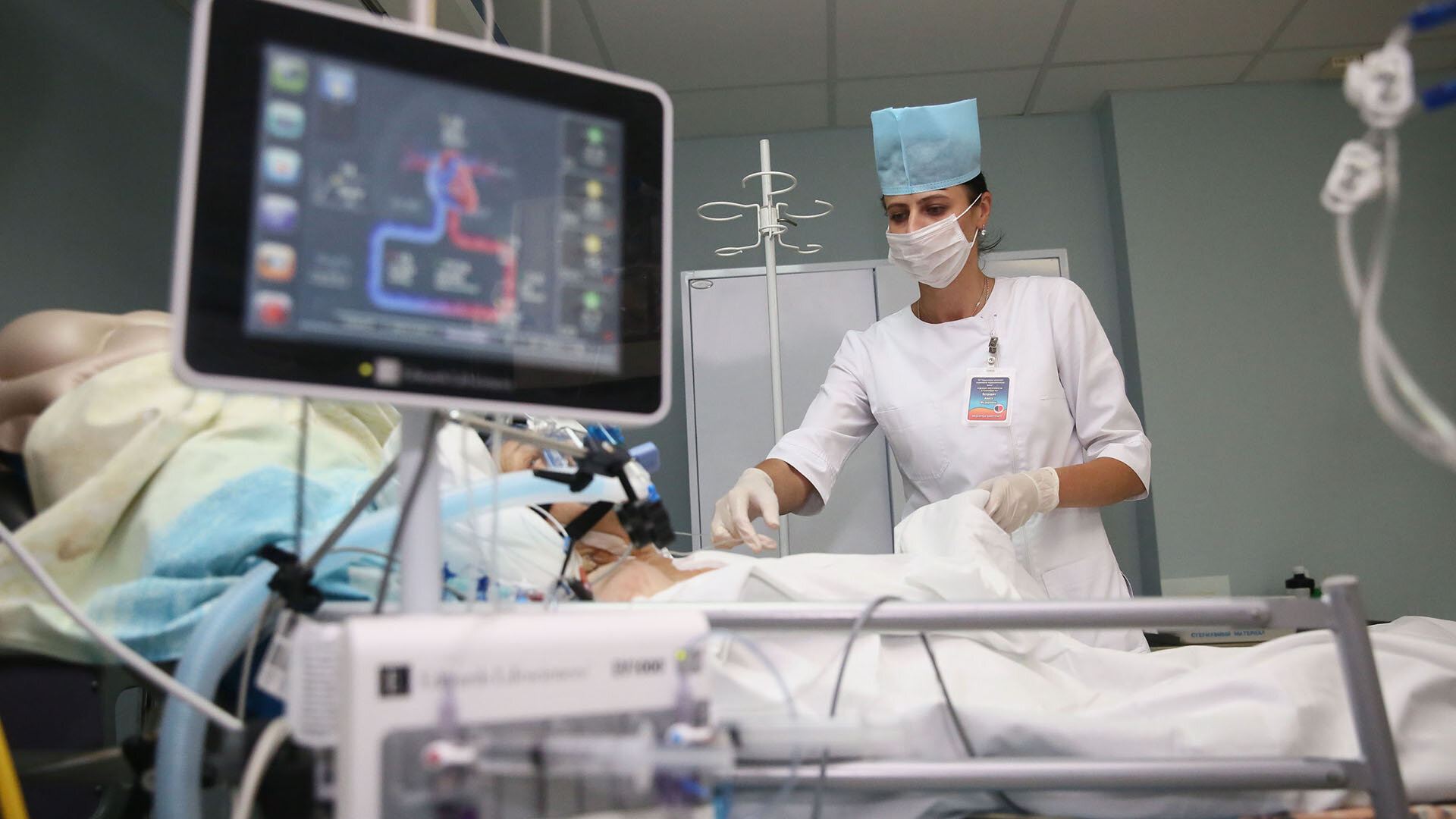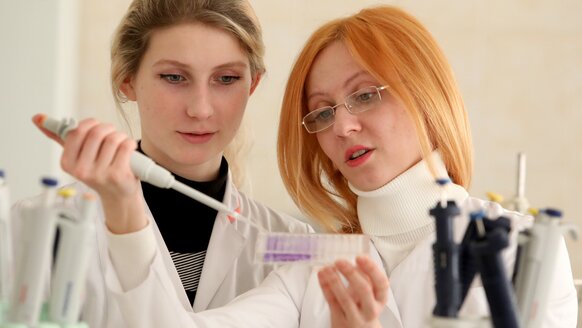Healthcare

The development of all branches of the social and economic sphere in Belarus is a continuous process. The Belarusian healthcare system saw substantial changes in the last few years as well. The structural and organizational foundation of the system has improved as well as the financial mechanisms the system relies on.
The Republic of Belarus is one of the few post-Soviet countries and European countries that have preserved a healthcare system funded by the state budget and adapted it to social and economic conditions. For the last few years the state budget has been spending 4% of the GDP on healthcare, which is on par with the social security threshold recommended by the World Health Organization and specified by the Concept of National Security of the Republic of Belarus.
The guiding principles behind the Belarusian healthcare system for the last ten years have included prevention through encouraging a healthy lifestyle; quality and affordability of medical care, including medications; sanitary and epidemiological wellbeing of the population and its future generations.
The healthcare system includes 565 inpatient healthcare institutions and 2,693 outpatient healthcare institutions, 17 national applied science centers and another applied science center in Minsk.
The availability of short-term stay hospital beds per 10,000 capita in the Republic of Belarus totaled 81.5 in 2024, which is much higher than that in neighboring countries – Poland (43.2), and Lithuania (45.7).
For the last ten years considerable attention has been paid to manning requirements of the healthcare system by means of developing the medical education system, introducing progressive education forms, new organizational forms, and continuous vocational training technologies.
The availability of practitioner medics per 10,000 capita in the Republic of Belarus totaled 53.9 in 2024, which is higher than that in such countries as Germany (46.6), Lithuania (46.2), Switzerland (45.5).
The availability of nurses per 10,000 capita in the Republic of Belarus totaled 136.0 in 2024, which is considerably higher than the figure registered in Germany (125.8), Switzerland (13.8), the Netherlands (113.7).
The Belarusian Healthcare Ministry puts efforts into raising the availability and quality of medical aid for all citizens of the country without an exception primarily via outpatient healthcare institutions.
The resource base of healthcare institutions has been renewed starting with those in rural areas and ending with institutions in oblast capitals and major cities by means of retooling and reconstruction. Every year the list of high-technology and complicated medical interventions grows larger. The volume of technological innovations rises. High-technology medical aid is readily available to the population thanks to a multi-tier system that provides aid not only at the national level but at premises of oblast hospitals and the institutions that offer services to several districts at once.
Considerable attention is paid to proper healthcare in rural areas where the district tier of the healthcare system plays an important role. The tier includes central district hospitals (107 in various parts of the country at present), district hospitals (9), hygiene and epidemiology centers, district centers for early detection and treatment, and other institutions. Each institution offers services within a radius of roughly 40km so that patients could reach one within one hour.
To improve access to healthcare in rural areas, roadmaps have been worked out focusing on various diseases and specifying schemes for providing medical aid to patients.
Teams of medics can also be dispatched to provide medical aid on site in remote locations. Teams are dispatched according to precompiled schedules taking into account the seasonal nature of agricultural work. Population is notified in advance.
A concept on creating interregional centers and collective-use centers has been passed in order to improve the availability of high-tech medical aid for rural Belarusians.
Work is in progress to set up interdistrict and interregional centers for several adjacent districts where all the resources will be concentrated such as highly qualified specialists, equipment, and modern technologies.
Promising avenues of development of the Belarusian healthcare system:
- the improvement of the regulatory framework that regulates various aspects of medical and pharmaceutical activities, medical education;
- the preservation of the leading role of state funding and the enhancement of connection between budget appropriations and results achieved by medical institutions, the expansion of sources of funding by means of voluntary medical insurance, the export of medical and educational services, public private partnership;
- the improvement of organizational mechanisms of the healthcare system and the introduction of integrated medical services taking into account the patient’s travel routines;
- the improvement of information interaction between medics, the introduction of digital prescriptions and digital medical records, new work technologies;
- the introduction of a modern model to organize the work of healthcare institutions;
- the introduction of general practitioners all over the country in 2020;
- the improvement of the medical aid quality management system;
- scientific, technological, and innovative development of the national healthcare system, its harmonization with similar systems of the Eurasian Economic Union and European Union member states;
- the introduction of an innovation management system, efforts to bolster the competitive ability of scientific research;
- the organization of a complex of high-level scientific studies able to accelerate the transition of the national economy to higher technological paradigms;
- further development of sophisticated medical aid for citizens of the country;
- the development of the domestic pharmaceutical industry and efforts to improve the circulation of drugs, namely:
- the achievement of the world level of development and the competitive ability of pharmaceutical products by means of intensifying the development of the pharmaceutical industry;
- harmonization of the legal framework in the area of development, production, and quality management of ready medications and pharmaceutical substances, pre-clinical and clinical trials with modern world requirements;
- the establishment of enterprises to make a new generation of pharmaceutical substances and ready medications (synthetized medications, nanostructured forms, brand new forms based on cell biotechnologies);
- the development of import-substituting and export-oriented enterprises to make ready-to-use medications and pharmaceutical substances;
- efforts to ensure information interaction at all tiers of the healthcare system by leveraging the universal state information system in healthcare, hence improving the quality of diagnostics and treatment, the safety of patients, the economic effectiveness of medical aid;
- the development of telecommunications technologies for contact with patients, telemedicine consultations to enable prompt communications between healthcare institutions of different levels in order to consult physicians remotely in the course of providing medical aid to patients;
- efforts to increase the export of healthcare services.
Medical tourism
More and more foreign citizens seeking quality and sophisticated medical aid and rehabilitation come to Belarus.
In 2023 Belarusian medics provided medical services to over 160,000 foreigners from 147 countries, including Kazakhstan, Latvia, China, Israel, Bosnia and Herzegovina, Serbia, the USA, Turkmenistan, Georgia, and other ones. The main beneficiaries of medical services in Belarus are citizens of Russia, Latvia, Ukraine, and Kazakhstan.
Dental services (implantation and prosthetics), ophthalmologic services, cardiological and cardiosurgical services, oncology services, prosthetics of joints, transplantation of cells, organs and tissues enjoy the strongest demand.
Advantages of medical tourism in Belarus include:
- high quality of available medical aid, diagnostics, rehabilitation, and recreation;
- excellent physical infrastructure available in clinics and hospitals;
- highly qualified medical personnel;
- affordable high-quality medical services;
- a large number of healthcare institutions and a broad range of services;
- constant drive to study cutting-edge technologies and introduce progressive treatment methods in practice;
- regular internships for specialists in the world’s leading clinics;
- a convenient geographical location of the country and transport links;
- a pleasant climate in Belarus that rules out acclimatization and facilitates faster recovery of patients.
